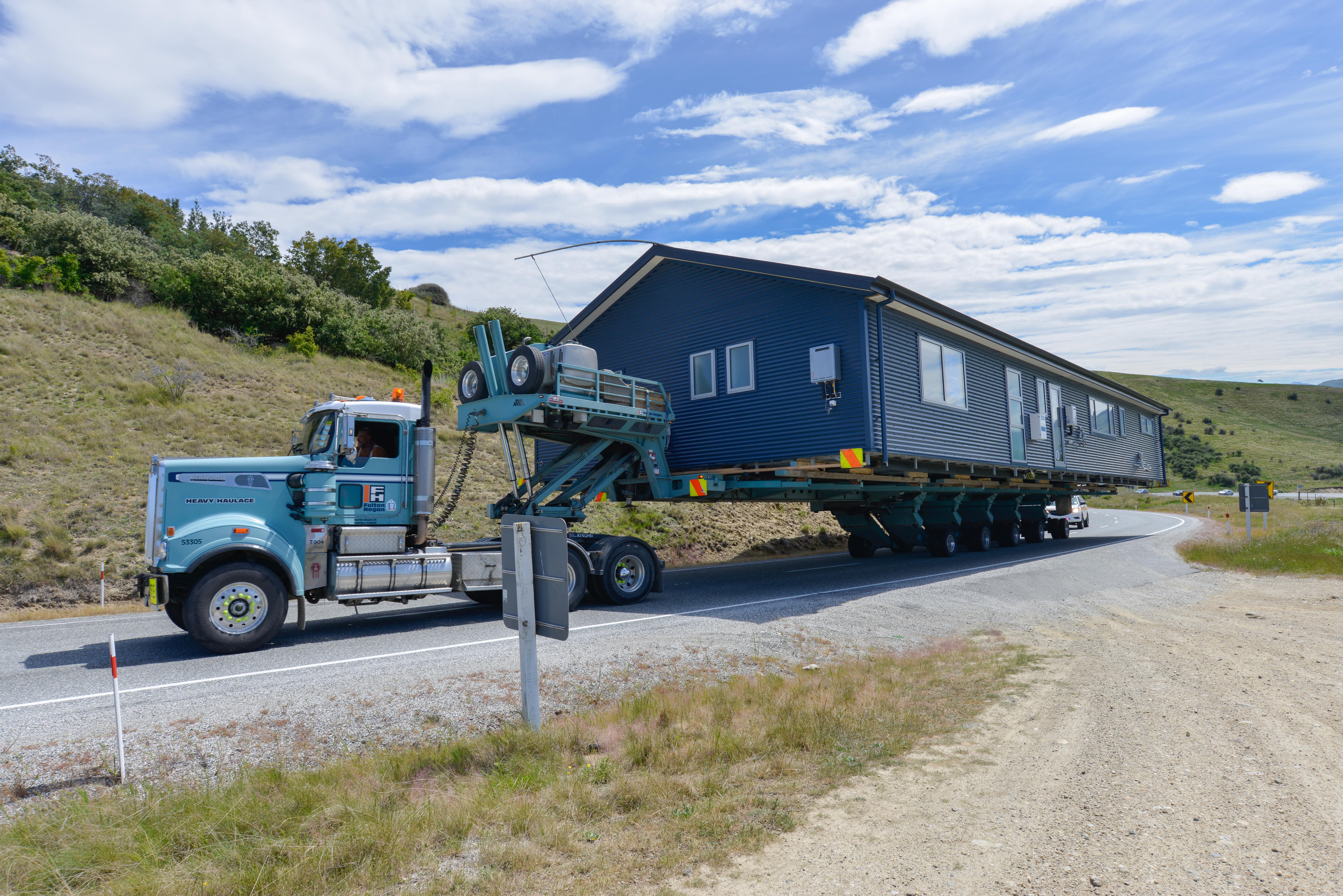
Moving a modular home isn’t quite like moving furniture across town or even relocating a traditional site-built house. It’s a highly specialized process that requires planning, expertise, and the right equipment. Whether you’re preparing to move your modular home to a new property, across the state, or even just a short distance down the road, it’s essential to understand what’s involved in modular home transportation.
At Associated Pacific Movers, Inc., we’ve been trusted with complex home moves for decades. We know that for homeowners, modular homes represent more than just structures — they’re places filled with memories, milestones, and comfort. That’s why we take pride in offering safe, efficient, and professional moving services. In this guide, we’ll walk you through the ins and outs of modular home transportation so you feel informed and confident when planning your move.
Understanding Modular Homes
Before diving into the transportation process, it’s important to clarify what makes modular homes unique. Unlike manufactured homes, modular homes are built in sections (or modules) inside a controlled factory environment and then transported to a site for assembly on a permanent foundation.
Key differences include:
- Construction Standards: Modular homes are built to the same codes as traditional site-built homes.
- Foundation Requirement: They are typically placed on permanent foundations like basements or crawl spaces.
- Longevity: With proper installation and maintenance, modular homes can last as long as site-built homes.
These factors mean modular homes are durable but also require specialized handling when being moved.
Why Modular Home Transportation Is Different
Unlike moving a manufactured home or relocating a small structure, modular homes are often larger, heavier, and more complex to disassemble and transport.
Here are a few reasons modular home moves require expert attention:
- Size: Modules can be up to 16 feet wide and 70 feet long.
- Weight: Each section can weigh tens of thousands of pounds.
- Permits: Oversize loads require state and local permits.
- Safety Concerns: Roads, bridges, and turns must all be carefully mapped to avoid hazards.
Simply put, modular home transportation is not a DIY job — it’s a task for experienced professionals.
Step 1: The Initial Assessment
Every modular home move begins with an on-site assessment. During this phase, professional movers evaluate:
- The size and weight of the home.
- How many sections it can be broken down into for transport.
- Site accessibility, including driveways, roads, and surrounding landscape.
- Structural integrity of the home to ensure it’s safe to move.
This initial step allows movers to create a detailed plan and provide homeowners with a cost estimate.
Step 2: Permits and Regulations
Because modular homes are considered oversized loads, they require special permits to be transported. Movers must comply with local, state, and federal regulations, which can include:
- Oversize load permits.
- Escort vehicle requirements for highway travel.
- Restricted travel times (e.g., no moves during peak traffic hours).
- Route approvals from transportation departments.
Experienced movers handle all of this paperwork, ensuring the move is legal and compliant from start to finish.
Step 3: Preparing the Home
Before the home is transported, careful preparation takes place:
- Disconnection: Utilities such as water, sewer, gas, and electricity are safely disconnected.
- Interior Securing: Cabinets, fixtures, and appliances are secured to prevent damage during the move.
- Structural Bracing: Additional bracing may be added to ensure the modules remain stable during transit.
- Separation of Sections: Multi-section homes are carefully detached into individual modules.
This step ensures both the safety of the home and the efficiency of the move.
Step 4: Lifting and Loading
Specialized hydraulic jacks and cranes are used to lift the home from its foundation. Once lifted, the sections are loaded onto trailers designed for oversized loads.
This phase requires precision — improper lifting could cause structural damage. That’s why it’s crucial to rely on professional movers with the right equipment and expertise.
Step 5: Transportation
Once secured, the modules are transported to the new location. This stage involves:
- Escort Vehicles: Pilot cars often travel ahead and behind the load to warn other drivers.
- Route Management: Navigating highways, city streets, and tight turns.
- Safety Protocols: Adhering to speed limits and regulations for oversized loads.
Depending on the distance, transportation may take hours or days. For longer moves, coordination between multiple state agencies may be required.
Step 6: Placement and Reassembly
At the new site, movers carefully position the home onto its prepared foundation. This step includes:
- Aligning each section accurately.
- Securing the home to the foundation.
- Reconnecting plumbing, electrical, and HVAC systems.
- Sealing seams to make the home weather-tight.
Once complete, the modular home is reassembled to look and function just as it did before the move.
Challenges in Modular Home Transportation
While professionals work hard to minimize issues, homeowners should understand potential challenges:
- Weather Delays: Rain, wind, or snow can slow down transportation.
- Route Restrictions: Low bridges or narrow roads may require alternative planning.
- Unexpected Costs: Soil conditions or site obstacles can sometimes increase expenses.
Working with an experienced team helps anticipate and overcome these hurdles.
Costs Involved in Modular Home Transportation
The cost of transporting a modular home varies widely based on:
- Distance of the move.
- Size and number of sections.
- Foundation work required.
- Permits and escort vehicles.
- Complexity of the site.
On average, costs can range from $5,000 for short local moves to $20,000 or more for long-distance relocations with multiple sections. Homeowners should always request a detailed estimate upfront.
Tips for Homeowners Planning a Modular Move
To make your move smoother, keep these tips in mind:
- Plan Early: Begin the process weeks or months in advance.
- Hire Professionals: Always choose movers with modular home experience.
- Budget Wisely: Allow for unexpected costs like landscaping or utility reconnection.
- Prepare the New Site: Ensure the foundation and utilities are ready before the move.
- Stay Informed: Ask questions and stay involved throughout the process.
Being proactive helps ensure a stress-free move.
Modular Home Transportation vs. Manufactured Home Moving
Many people confuse modular and manufactured homes. The difference matters for transportation:
- Manufactured Homes: Built to HUD standards, often moved with their own chassis and axles.
- Modular Homes: Built to local building codes, transported on trailers, and require reassembly on a permanent foundation.
This distinction makes modular home transportation more complex, requiring more planning and coordination.
Why Professional Movers Are Essential
It can’t be stressed enough: modular home transportation is not a job for general contractors or DIY efforts. Professional movers provide:
- The equipment to lift and transport massive sections.
- Knowledge of permits, regulations, and oversize load requirements.
- Experience in safely securing homes for long journeys.
- Peace of mind that your home is in capable hands.
Hiring the right team ensures your home arrives safely, intact, and ready for reassembly.
Modular Home Transportation Recap
Moving a modular home involves:
- Initial assessment.
- Permitting and regulation compliance.
- Preparation of the home.
- Lifting and loading.
- Safe transport.
- Placement and reassembly.
Each step requires expertise, precision, and planning. By understanding the process, homeowners can feel confident and prepared for what lies ahead.
Move Your Home with Confidence with Associated Pacific Movers, Inc.
At Associated Pacific Movers, Inc., we know your modular home is more than just a structure — it’s where your family gathers, memories are made, and life unfolds. That’s why we’ve built our reputation on providing safe, reliable, and professional moving services across Idaho and beyond. From handling permits to managing every detail of modular home transportation, our team is committed to making the process seamless and stress-free.
With decades of experience, state-of-the-art equipment, and a passion for helping families transition smoothly, we’ve become the trusted partner for homeowners facing one of the biggest moves of their lives. Whether your modular home is moving down the street or across state lines, we treat every project with the care and precision it deserves.
If you’re preparing for a modular home move, don’t leave it to chance. Visit Associated Pacific Movers, Inc. today to learn more about our services and request a consultation. Let us help you relocate your home with the confidence that comes from working with true professionals. Because when it comes to moving something as important as your home, you deserve nothing less than the best.

